|
Input Devices
Input devices are simply the components that a person uses get data into a computer. The most basic input devices are a mouse and keyboard.
Keyboards:
In the following image, you can see a keyboard with a relatively standard 104 button layout.
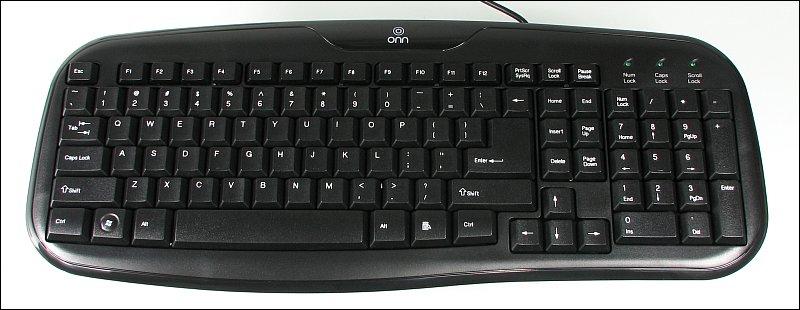
The next keyboard is called a multimedia keyboard. They are designed to allow quick access to various options through special buttons. This keyboard has more features and is worth the extra expense (approximately $20 total) if you listen to music often on your computer.
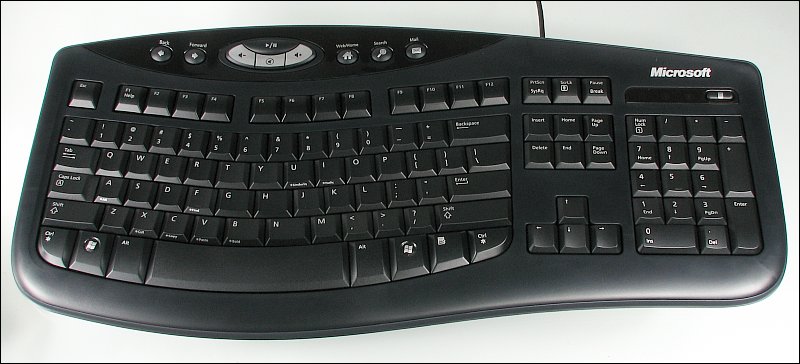
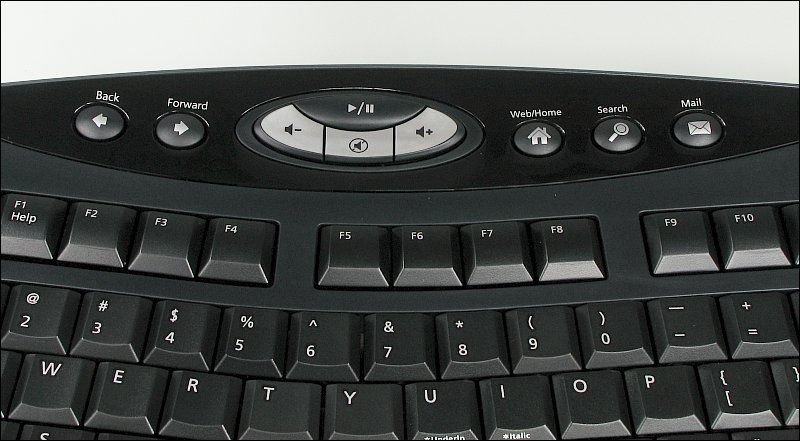
On this site, there are items that produce pop-up windows. Don't mistake these for the annoying ads that pop up on some sites. Generally, it's a relevant link that gives you a photo example to help you to better understand the current topic. For text links (typically underlined or otherwise highlighted), the pop-up will be a new image. If you click on an image, it typically brings up a larger, higher resolution image. In either instance, you need to close the pop-up window manually. Clicking on an area outside of the pop-up will make it disappear but could cause some confusion later. If you don't close it, it will fall behind the main window. When you click on another link or image that needs to pop-up, it will actually pop-under into the window that has fallen behind the main window and you'll assume that the link simply didn't work. When you're finished viewing the image in the pop-up window, click the X in the top-right corner of that window. This is the way the pop-up windows function throughout the site.
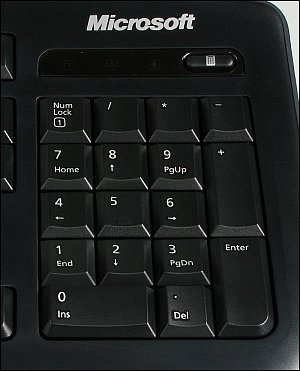 The image at the right (click for a larger image) shows the number keypad and the 'calculator' button (not an option on all keyboards). For the number keypad to produce numbers, the 'number lock' must be active (LED indicator will be lit when it's active). This is the default mode for most computers and can be changed in the BIOS (to be covered later) if it's not the default on your computer. If the number lock isn't active, the alternate function will be performed when the various keys are depressed. Since most of those functions can be performed by other keys on the keyboard, there's generally no reason to set the number lock to inactive. The calculator button will bring up an on-screen calculator that you can use either with your mouse or with the number keypad.
The image at the right (click for a larger image) shows the number keypad and the 'calculator' button (not an option on all keyboards). For the number keypad to produce numbers, the 'number lock' must be active (LED indicator will be lit when it's active). This is the default mode for most computers and can be changed in the BIOS (to be covered later) if it's not the default on your computer. If the number lock isn't active, the alternate function will be performed when the various keys are depressed. Since most of those functions can be performed by other keys on the keyboard, there's generally no reason to set the number lock to inactive. The calculator button will bring up an on-screen calculator that you can use either with your mouse or with the number keypad.
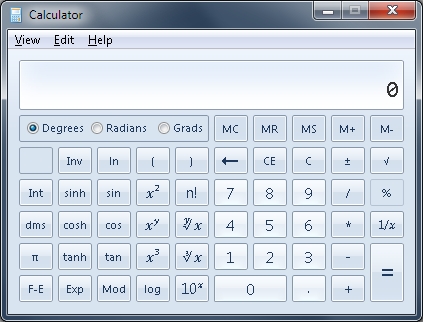
The Mouse:
The following mouse is called a wheelmouse. As you can see it has 2 visible buttons (the areas on each side of the front of the mouse) and a center-mounted scroll wheel. The left button is used to select various objects on the screen, The right button will bring up a dialog box to allow you to select several other options/functions. THIS is one example of a dialog box. It's what pops up when I right-click the desktop of this computer. As was mentioned before, this mouse has 2 'visible' buttons. It also has a 3rd button. It's located 'under' the wheel. If you press the wheel down, the mouse produces a third function. There are typically several selectable functions for the center button. I usually set it to double-click. The 'wheel' on the mouse is typically for scrolling down a page but its function can change depending on the application (program) you're running. For example, if you're watching a video, the scroll may act as a volume control (since there is no need to scroll in a video). Sometimes, the software allows you to select the function of the wheel (volume, zoom, fast-forward/rewind speed...). This is a very basic mouse. There are others that have many more features. The Logitech G500 is one example. You can download the owner's manual HERE to see what's available on a more advanced mouse. These are mainly purchased for gaming (playing video games on your computer) but can be used like a normal mouse for normal computer operation.
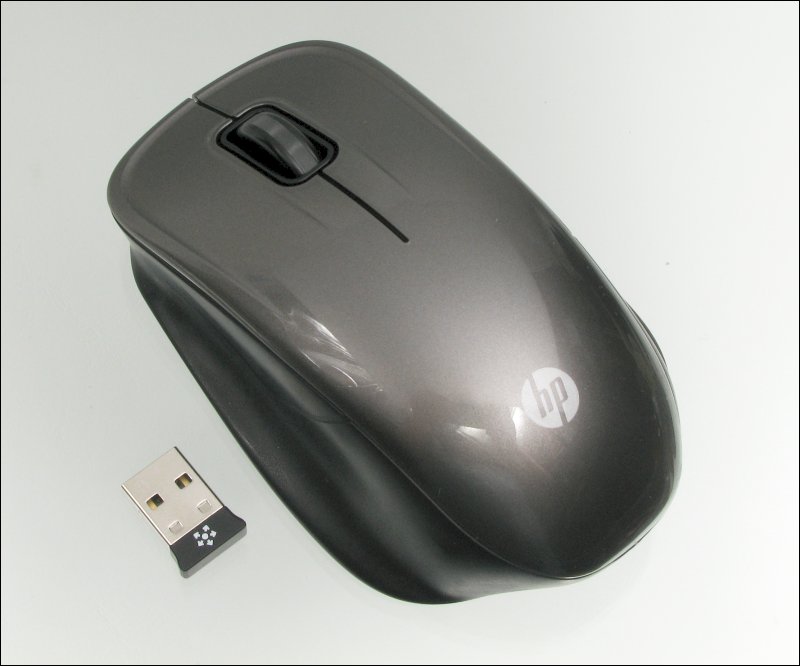
The mouse above is a wireless optical mouse. Being wireless, it has no... wires. It has a USB receiver that plugs into your computer. The mouse uses two AA batteries for power. It's optical because it uses an LED to illuminate the desktop and then read what's reflected to sense motion.
If you remove the top cover of the mouse, you can see the two batteries. Also provided is a storage area for the USB receiver just behind the batteries. Ordinarily, you'd leave it plugged into your computer but if you used the mouse on a public computer (coffee shops, libraries...), you would store the receiver in the mouse when you weren't using it.
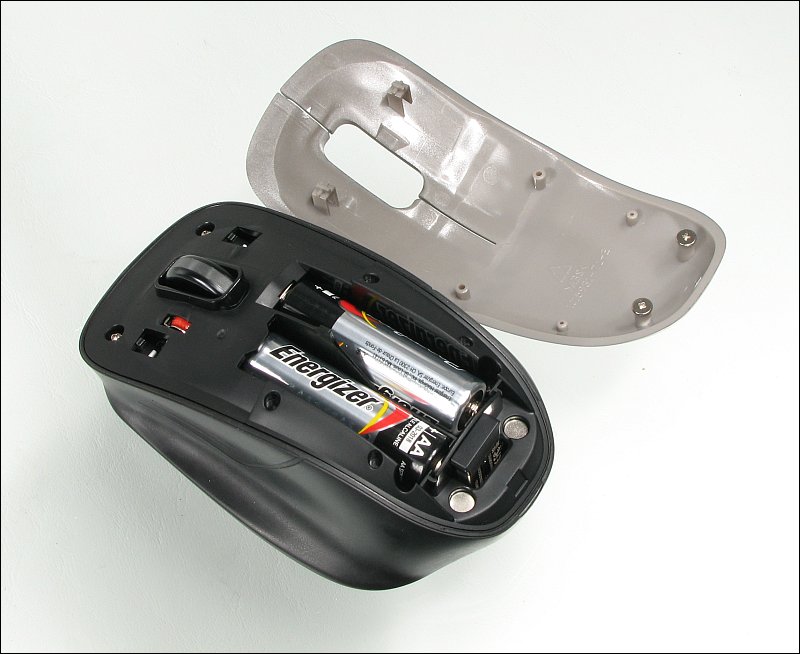
Looking at the bottom of the mouse, you can see something that's not found on hard-wired mice. The on-off switch is used to switch the mouse off if it's not going to be used for an extended period of time. The 'connect' button is used if the mouse, for some reason, doesn't immediately connect with its receiver.
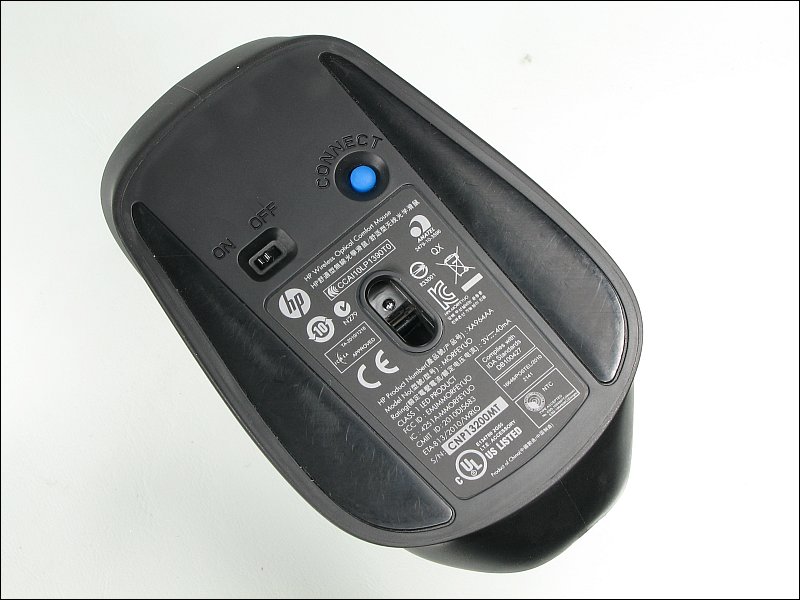
If the top surface of your desk is featureless or is covered with a thick piece of glass, an optical mouse may not work properly. To use an optical mouse on that type of surface, you will need to use some sort of mousepad. A mousepad is typically a smooth neoprene backed mat that's approximately 8" x 8". The surface is designed to make the mouse move smoothly and it typically has a texture that allows an optical mouse to work properly. The one below is a bit fancier than a standard mousepad but it serves the same purpose. The back part of the mousepad has a raised, cushioned area which will make it a bit more comfortable to use if you need to use it for extended periods of time.
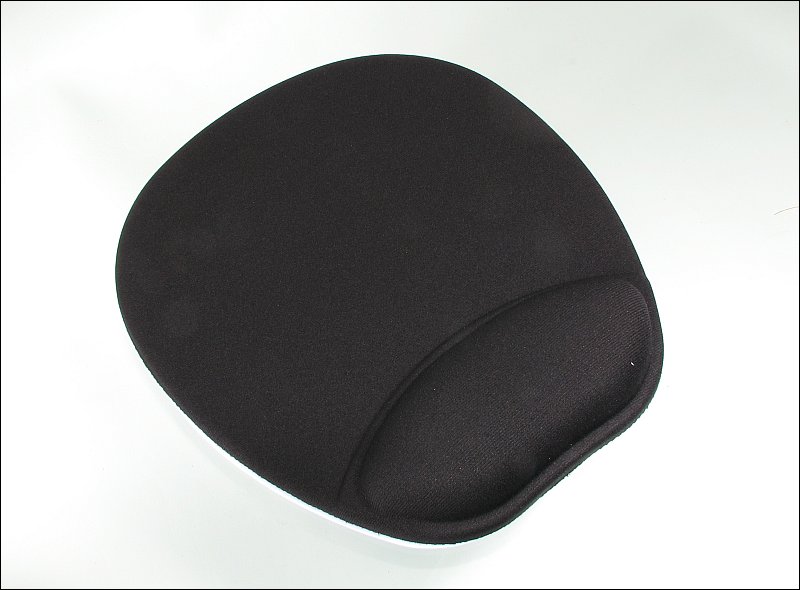
Trackballs aren't very common but they're good if you don't have a solid surface on which to use a mouse or don't have the space to use a mouse on your desktop. They work much like a mouse but instead of moving the trackball on the desk, you roll the ball with your thumb.
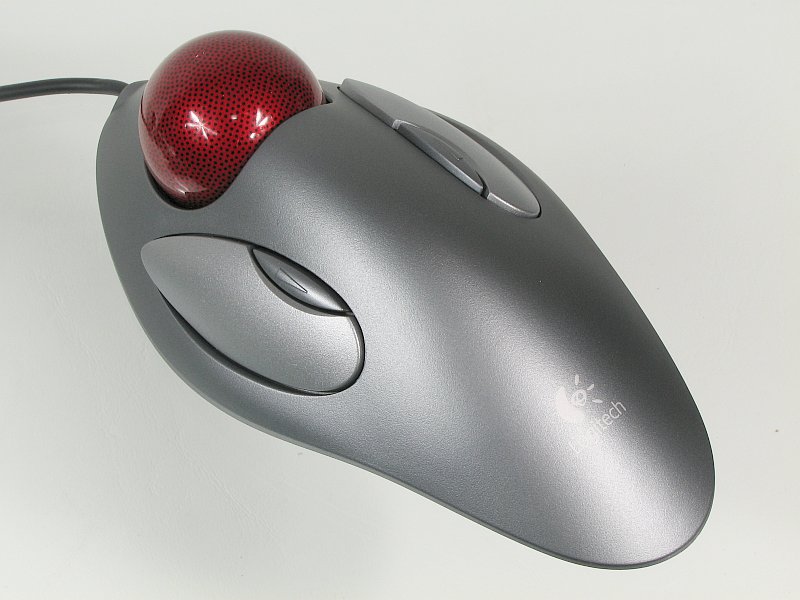
Below, notice that there is a rather large adapter on the end of the trackball cable. This trackball is a USB device and if you didn't want to take up one of the few USB ports on a computer, you could use the adapter. This allowed it to be plugged into the PS/2 port. If you wanted to connect the trackball to a USB port, you'd unplug it from the adapter and plug it directly into the USB port. This type of adapter can be used to convert most input devices (keyboards, mice, trackballs...) from USB to P/S2. The various types of input and output ports will be covered later in the tutorial.
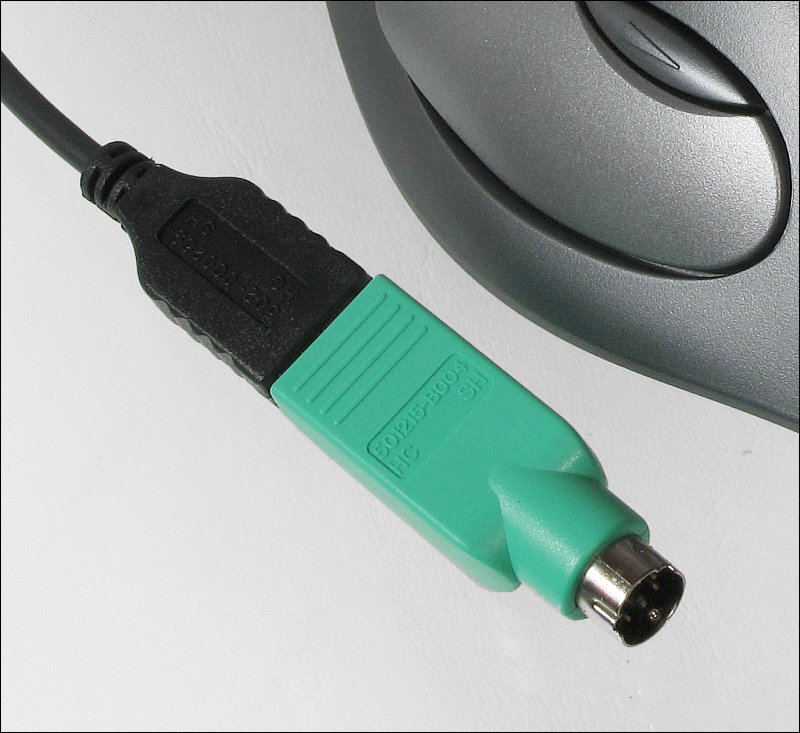
Touchpads:
Most laptop/notebook computers have touch pads (slightly recessed rectangular area above the two large buttons in the image below). These can be used with your finger or a stylus (pencil-like device with a rounded point). If you're using a laptop computer and hate the touchpads as much as I do, you should know that you can use a standard mouse with the computer. When using the touchpad, you move the cursor by moving your finger on the pad. You use the buttons below the pad as you would the left and right mouse buttons. If you want to select an item on the screen, you can use either the left button or double-tap the touch pad at the same location on the touchpad. The scroll wheel functions just like the scroll wheel on a mouse.
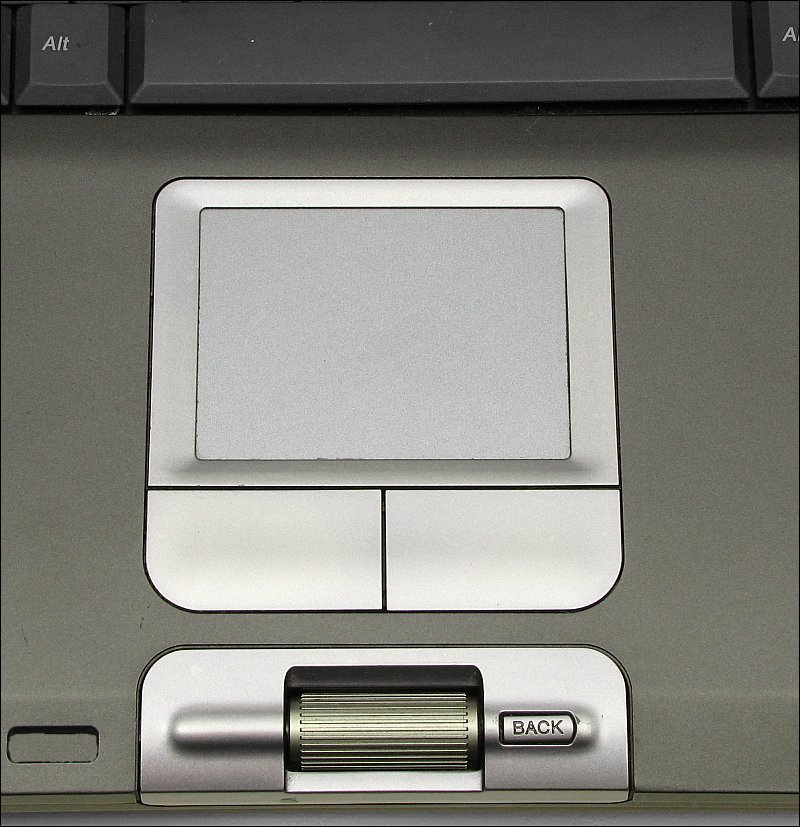
Cursors:
The cursor will change its appearance in relation to it's function. If you place the cursor on a vacant/blank part of the desktop, the cursor will be an arrow pointer (unless the cursor has been changed from the default).
If you place the cursor over plain text, the cursor will change to an I-beam. When it's in that mode, you can click and hold down the left mouse button and then drag the mouse to select text (generally done when you want to copy and paste that section of text). Try it now on this page. Clicking the mouse anywhere on the desktop will deselect the highlighted text. In some instances, you can copy both text and graphics but you have to paste it into a program that can accept the image. For example, Notepad (a text editor) cannot accept images but Microsoft Word or OpenOffice Writer (both are more capable text editors) can accept the image.
If you click the mouse cursor in the address bar at the top of the browser window (where is currently has "http://www.bcot1.com/"), it will (should) highlight the text in the address bar. If you click once more, the highlighting will be removed and the cursor will change to a pipe (straight vertical line - the character produced when you press shift-backslash on the keyboard). At that point, the cursor becomes a placeholder that shows you where the text will be placed when you begin typing. Generally, when you click in the address bar, you will do so to type in an address or begin a search. As an exercise, if you know someone struggling to use their computer and think they could benefit from this site, click in the address bar to highlight the address of this site. Right-click (right mouse button instead of the left mouse button) in the address bar and select copy from the dialog box that pops up. Email that friend (someone who won't mind the email) and send them the link. All you generally need to do is paste the link in the body of the email. If the address doesn't highlight when you click in the address bar, click anywhere in the body of this page, then click once in the address bar and it should highlight the address.
If you have a friend who you think would benefit from this site, practice copying and pasting the following link into your next email to your friend. There are several ways to copy and paste but for now, let's keep it simple. Highlight the text link below and right-click on the highlighted text. When the dialog box pops up, select COPY from the menu. In the body of the email, right-click again and this time, select paste. The link will be dropped into the body of the email. Leave one blank line above and below the link to ensure that it doesn't get mixed with the other text in the body of the email. Please only send this to someone who would appreciate the link.
http://www.bcot1.com
If you place the cursor over a LINK (one of my other sites), the cursor will change to a hand with an extended index finger. The tip of the index finger is what you want over the item you're going to select when you click the left mouse button. When selecting a link, it's important that the body of the mouse doesn't move. If the mouse is moved when you click on the item, it will not have the desired action. It will either select text or be ignored by the computer.
Output Devices
Output devices are simply the devices that allow you to 'see' the data being produced by the computer. The most basic output device is the monitor. The printer is also an output device. For early computers, printers or plotters were the only output devices.
Keyboard Basics
- The CTRL Key:
The 'control' key provides extended operations to several of the keys. In the following image, you can see many of the most common functions. To activate the function, you press and hold the control key and hit the appropriate button. For example, if you want to copy something, you would press and hold the control key and hit the 'c' on the keyboard (then release both buttons).
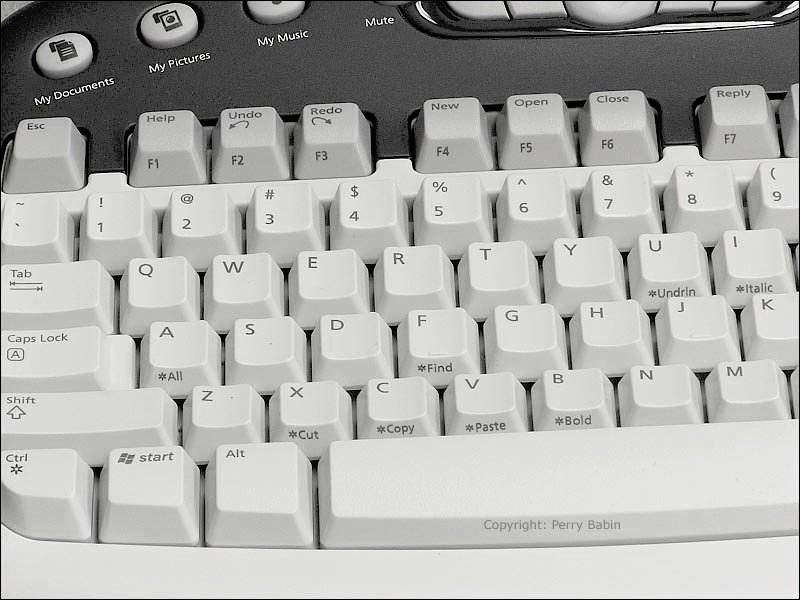
- F1:
The F1 button is almost universally the 'help' button. Pressing it will bring up the help dialog box for the program you're currently using.
- Shift:
The Shift key gives you the upper-case of whatever key is pressed while you're holding the shift key down. It also gives you the characters above the numbers that lie along the top of the letters on the keyboard.
- Cap Lock:
The Caps Lock key makes all letters that you type appear in upper-case form. It does not, however give you the characters above the numbers as the shift key does.
- Delete:
When pressed, the delete key deletes the character just to the 'right' of the cursor.
- Backspace:
When pressed, the backspace key deletes the character just to the 'left' of the cursor.
- Scroll Lock:
This button is not used much anymore and only works in a few programs. The only program that I have that uses it is Excel. In Excel, if the scroll lock is ON, the arrow keys can be used to scroll the page without changing the 'active' or highlighted cell.
- Number Lock:
When active, this enables the numbers on the keypad. When the num-lock is not enabled, the numbers act the same as the keyboard 'arrows'. The indicator lamp on the keyboard will let you know if it's on or off.
- Start:
On newer keyboards, you will have a 'Windows' button. It opens the start menu.
- Alt:
The Alt button acts similarly to the Ctrl button. It provides extended functions to some of the keys. For example, the 'PrtScn' button copies the screen to the clipboard (to be covered later). If you use Alt-PrtScn, you will copy only the active window to the clipboard. The Alt-PrtScn function is how I captured many of the sample windows in this tutorial.
- Page Up/Page Down:
These buttons scroll one full screen at a time.
- Home/End:
These buttons send the text cursor to the left or the right of the line of text in which your text cursor is flashing. This only works in editable text areas.
Note: The keyboard shown above has functions not available on a standard keyboard. The 'F' keys on most keyboards don't perform functions such as 'Undo' and 'Redo'.
Cleaning a Ball-Type Mouse:
On the ball-type mice, you will eventually have problems with tracking. Assuming that nothing on your desktop has changed, the problem will likely be that the rollers inside the mouse have become contaminated. The rollers transfer motion from the ball to the encoders. When they get dirty, they fail to roll properly and therefore, the encoders will not 'see' the motion properly. Luckily, the problem is easily corrected. What you need to do is remove the ball retaining cover. It typically either slides off or unscrews ~1/4 turn. There should be some sort of arrow on the cover to tell you what to do. When you remove the cover, the ball will be free to fall out (just letting you know so you don't have to bend down and pick it up off of the floor). When you get it open, you will see three rollers. Two of the rollers are active. The third is spring-loaded and is used to keep the ball in contact with the other rollers. All three rollers need to be free of foreign material. If you look at the following picture (a little disgusting, I know), you can see that the black roller has some gray material on it. It's a combination of cloth and paper fibers and oil from the users hands. To clean it, use a dry paper towel and wipe sideways while rolling the roller a little on each pass. It may take quite a few passes to get it clean. When you think it's clean, turn it by hand and make sure that it is actually clean. Do this on all three rollers. When finished, simply replace the ball and the retainer cover.
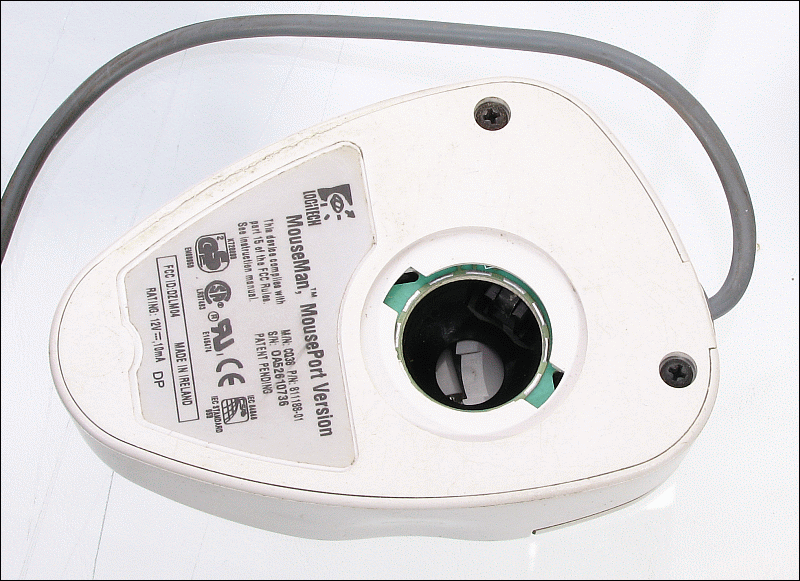
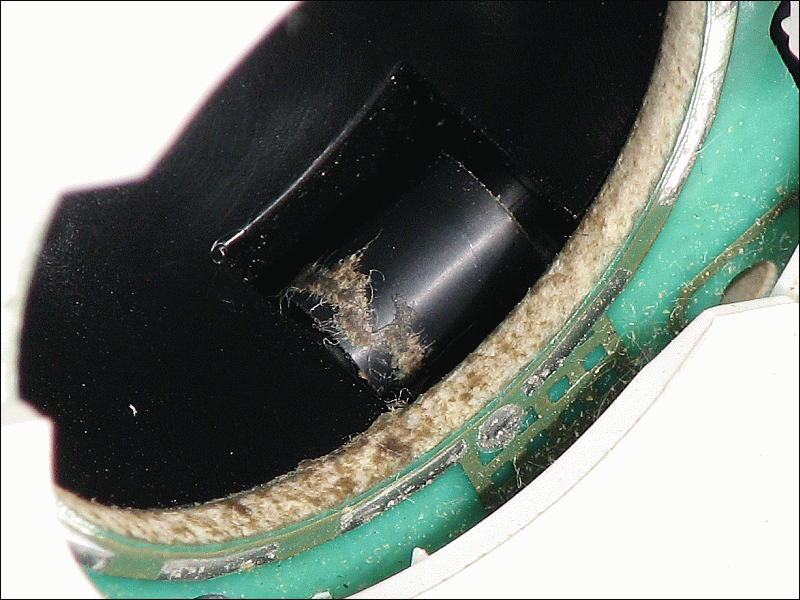
|
You May Be Interested in My Other Sites
-
This site was started for pages/information that didn't fit well on my other sites. It includes topics from backing up computer files to small engine repair to 3D graphics software to basic information on diabetes.
-
This site introduces you to macro photography. Macro photography is nothing more than the photography of small objects. It can take quite a while to understand the limitations associated with this type of photography. Without help, people will struggle to get good images. Understanding what's possible and what's not possible makes the task much easier. If you need to photograph relatively small objects (6" in height/width down to a few thousandths of an inch), this site will help.
-
If you're interested in air rifles, this site will introduce you to the types of rifles available and many of the things you'll need to know to shoot accurately. It also touches on field target competition. There are links to some of the better sites and forums as well as a collection of interactive demos.
-
This site is for those who want to install or update their car stereo. It begins with the most basic electronics theory, progresses into basic transistor theory as well as covering virtually everything associated with car audio.
|
|














